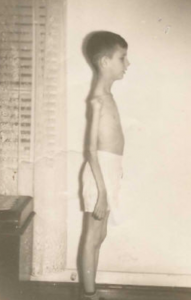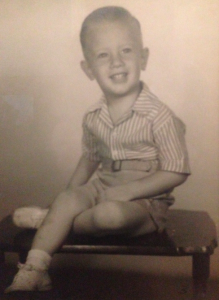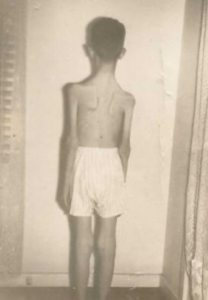Polio isn’t something you hear much about if you live in the developed world. And thanks to the polio vaccine, it has been eradicated from the United States. But due to the fall in vaccine rates, the chances that the United States will see polio outbreaks is inclining. That’s because polio still exists; it’s hiding out in developing countries, and only a plane ride away from being at our doorstep.
The polio vaccine is one of the most effective vaccines for preventing disease. Since its introduction to the U.S. in 1955, the number of cases fell drastically. In the mid-century, there were around 35,000 cases reported (and countless cases unreported) each year, 3,000 cases in 1960, and just 10 in 1979.1 Since 1980, the United States has been polio-free. And remember, that’s because of the polio vaccine. Just because we haven’t seen a case since then, if left unvaccinated, it doesn’t mean you are immune.
So why keep getting vaccinated? We vaccinate to make sure that should this virus make its way back into our country, it doesn’t run wild. The virus needs to have nowhere to go and nowhere to hide. Because people can carry polio and spread it without ever getting sick or realizing they have the virus.
And that’s exactly what happened to Jerry in 1950.
It was the beginning of the school year, late September, in a small town in Louisiana. You can imagine the heat as Jerry, a seven-year-old, leaves his elementary school on a Friday afternoon after a long week. It was a typical week and a normal day until that night when Jerry spiked a very high fever.
The fever held high and didn’t burn off all weekend. Sunday night his parents took him to the hospital. What happened next was like something out of a nightmare. Jerry’s fever never broke 100*F, he contracted pneumonia, and his body steadily lost strength.
Before he entered the hospital he could hold his arms outright to read a comic book while lying flat on his back. As the days passed, his strength to even do that was leaving his arms like the water slowly trickling out of a running faucet.
After nearly two weeks of testing, Jerry’s doctors discovered it was the poliovirus invading his nervous system. A mystery due only to the fact that he was the only diagnosed case in his town, and the nearest case was over 7 miles from where Jerry lived.
Around the time of the diagnosis, Jerry’s fever broke and he was nearly 24 hours from being put in an iron lung. He had lost the use of his right arm, was left with 45% mobility in his left arm, and he was being told he would probably never walk again.

After six months of being bedridden, Jerry relearned how to walk, overcoming unbearable pain. He had to relearn everything using only one partial arm and even mastered switching handedness.
A year after he entered the hospital, he finally returned home, but not without major challenges. Jerry had to repeat the second grade in a body brace. The brace wore like a corset around his waist and connected to a metal rod that came up the side to his shoulder, then out 90* from his shoulder, down the length of his arm, and out another 90* back in front of him. He wore this brace for TWO YEARS. And for two years he maintained outpatient rehabilitation.
Jerry used to be an athlete. He played all kinds of sports and had many friends. But, he says when he went back to school he went back as a freak. Jerry remembers being constantly picked on by the kids in his elementary school and fighting back with antidotes such as, “I’m going to give you what I have.” Needless to say, that scared the kids off.
The following eight years he did his own version of rehab at home, which included a lot of walking, running, and calf exercises. His fear of losing the ability to move his legs kept him exercising until he collapsed. And he’s so glad he did that because he’s still able to walk without pain.
But he never regained the use of his right arm or the rest of the mobility in his left. And he lives in constant fear of falling and breaking his one working arm. Should he lose what little arm mobility he has, he would be in need of someone to do everything for him.
Jerry also lives in a constant struggle to breathe. He has only 36% lung capacity, which he describes as feeling like there’s a belt around his chest one notch too tight so that he’s never able to get a full breath of air.
His inability to get a full breath of air is a symptom of post-polio syndrome: symptoms that set in 30-40 years after contracting polio. Along with breathing problems come progressive muscle/joint weakness and pain, fatigue and exhaustion with minimal activity, muscle atrophy, swallowing problems, sleep-related breathing disorders, and decreased tolerance of cold temperatures.
Jerry fits many of these symptoms. He is getting weaker as time passes, so much so he can hardly get up off the floor from a sitting position. He has a hard time making it up a flight of stairs. His muscles are not only atrophying, but nearly nonexistent in his chest and back. And he can only raise his left elbow about halfway up the side of his body. Even though he is very good at maintaining what’s left of his health, his quality of life is still dwindling.
Many things are difficult for Jerry. “Of all the challenges of being handicapped, the biggest disappointment and frustration is not being able to pick up and hold my children, and now, my grandchildren. Seeing (my granddaughter) standing in front of me with her arms extended wanting to be picked up and held and knowing there is no physical way to do that; that hurts,” says Jerry.
A polio vaccine was made available to citizens of the United States just five years after Jerry contracted polio. Those living during the mid century could see the effects of polio every day. Today we don’t see children crippled from polio playing on our streets. We have few reminders of what this dreadful disease can do.
Jerry is our reminder, and he’s an avid supporter of childhood vaccination.
“Look at me. Do you want your child to wind up like this?” -Jerry
References:
- The Centers for Disease Control and Prevention. www.cdc.gov
- Immunization Action Coalition. immunize.org




Great article!!!